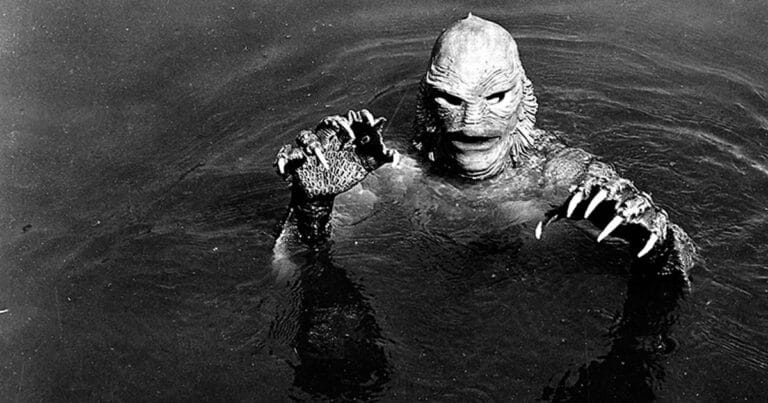By Staff · July 28, 2017

One of the oldest subgenres of horror is the monster movie. From Edison’s 1910 adaptation of Frankenstein to the 1915 film Der Golem, aberrant beings and evil beasts have haunted the screen since the early days. How do we keep them fresh and scary, then, when the formula is so familiar? There must be a way – creature features still delight and terrify us, as evidenced by the blockbuster reboots of Godzilla and King Kong. Here are a few tips that can give your monstrosities their own terrifying life:
Films must be exciting, of course – especially when they’re about bloodthirsty aberrations – but it’s easy to waste all of your thrills in the first act and wear your audience out in the process. When the foremost goal of your film is to frighten, this is especially important. Showing your monster for the first time is arguably the most vital and difficult part of making a successful creature feature. And no matter how impressive the effects are, the audience can tire of them after a while. Keeping the monsters at a low dose will help ensure their effectiveness, and give more room for character.
There are endless examples of this. An American Werewolf in London solves the wolfman-movie pacing issue through David’s terrifying nightmares, which create psychological drama before the corporeal horror begins. The Descent sets up the dreadful circumstances of its setting before the monsters come into play. Alien is extremely deliberate in its pacing, unveiling its enigmatic mythology patiently until the titular villain finally (literally) bursts into the story. That first appearance is crucial, and it has to hit hard – we can only see the monster so many times before it loses its power. KEEP YOUR MONSTER HIDDEN
KEEP YOUR MONSTER HIDDEN
As the granddaddy of tentacled monstrosities, H.P. Lovecraft, noted – the greatest human fear is that of the unknown. Keeping a monster in the shadows, only unveiling its appearance at the last moment, will keep it a mystery; and what we don’t understand, we fear. Horror is defined by its focus on dread and the uncanny, which is diminished once we understand too much.
Jaws is so creepy because we don’t see the beast as it drags people to their doom; though this is attributed more to production accidents than writing. Joe Dante’s The Howling manages to actually terrifying with its werewolves because it keeps them a secret, unleashing them only in the last moments. The Host keeps its focus on human drama, punctuated by emotionally volatile appearances by the monster. Cloverfield only shows its beast fully onscreen once or twice, if that, and it never explains its origins. The creature is the centerpiece, of course, but it must be scary. Only show it at the most crucial moments, and the mystery will remain to haunt viewers after the credits roll.

From Bong Joon Ho’s ‘The Host’
After so many decades of horror cinema, it’s difficult to find physical or motivational specificities to set your monster apart. This is essential, though; if we’ve seen a monster before, we can’t truly fear it. That doesn’t mean that each new film must invent a mythology from scratch – its approach just needs to be different. Considering the insane amount of folklore material in the world, this isn’t too much of a challenge.
Trollhunter and The Hallow both draw on their respective locations’ folklore, literalizing myths in intricate and full-bodied ways. Even common beasts, such as a werewolf or vampire, can be given fresh takes – American Werewolf and The Howling both provided unique spins on this creature in the same year, one with dark humor, one with eerie cultish overtones. Hellraiser gives its Cenobites an almost Biblical mythology, lending them a poetry almost unseen in the genre. Then there’s films like The Thing or The Void, both of which feature shapeshifting monsters that provide endless visual invention. Whether it be unpredictable takes on classics or an entirely fresh creation, the creatures must speak for themselves. But…
This mantra applies to the design as well – humanoid beasts are uncanny due to their resemblance – but it’s most important for the story. While monsters provide the visual threats, the true villains of The Mist are paranoid, desperate people. The Babadook would lose its power without the central metaphor regarding mental illness and grief. As evidenced by its predecessor’s lack of honest impact, Cronenberg’s version of The Fly proves the need for pathos – its monster is ultimately a figure of tragedy. The oldest example of this comes from Frankenstein – poor adaptations of Mary Shelley’s classic fail when they forget that the man-made monster just wants to be accepted.

David Cronenberg’s “The Fly” is an expert blend of body-horror and creature-feature aesthetics
Pacing, design and lore are all important ingredients, with the human element taking precedence over all of it. It’s no easy feat creating monsters – Frankenstein himself displays just how difficult it can be – but there are common trends to guide one along the path. Get your claws and scales ready, then center them around that festering, beating heart.